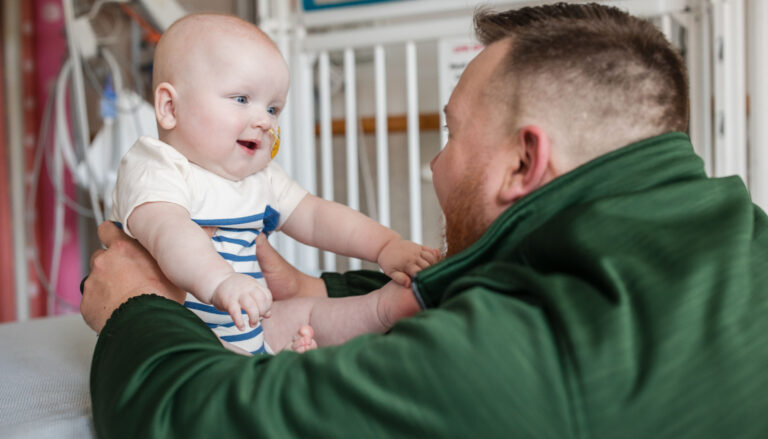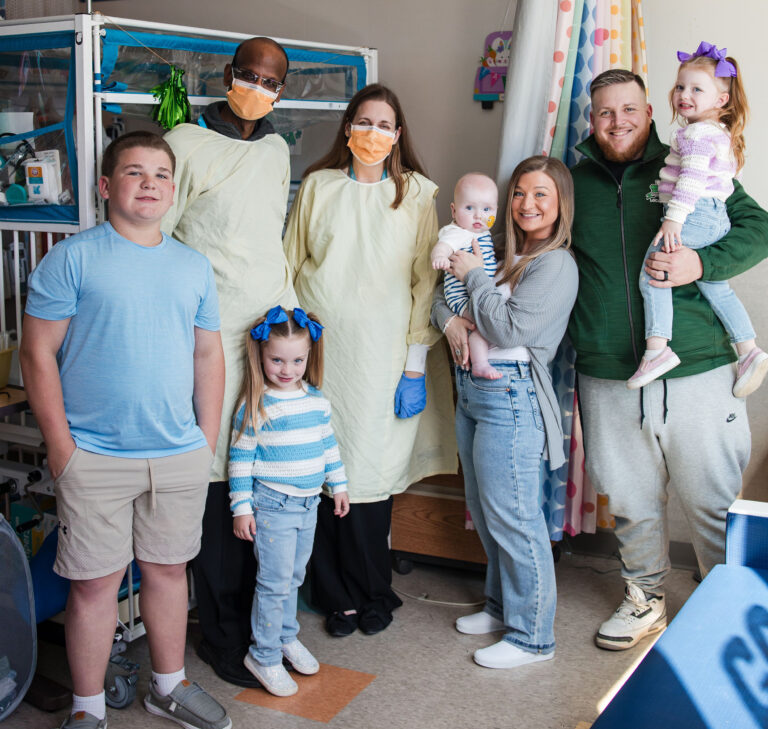Infant Born With Deadly Disease Now Thriving Thanks to Customized CRISPR Treatment Six Months After Birth
A newborn boy, KJ, was diagnosed at birth with a rare and potentially fatal genetic disease. He received a novel, on-demand CRISPR therapy in record time.

In a medical first, doctors raced to create a bespoke CRISPR gene therapy for a boy born with a deadly genetic disease and delivered it to him a mere six and a half months after birth.
The CRISPR treatment was administered safely, and the infant is now growing well and thriving, his doctors say. They hope that the treatment will make a liver transplant, which is usually required for survival, unnecessary for him.
The boy inherited two mutated genes that prevented him from breaking down the proteins in his food, which leads to a build-up of ammonia that destroys the liver and can cause lifelong neurologic damage.
Researchers at the University of California, Berkeley’s Innovative Genomics Institute (IGI) worked with the boy’s physicians at the Children’s Hospital of Philadelphia (CHOP) to test the safety and efficacy of a CRISPR base-editing therapy that hospital doctors had developed. The tests helped fast-track approval of the new therapy by the U.S. Food and Drug Administration.
The boy, KJ Muldoon, was born in August 2024 and immediately had his DNA sequenced, revealing mutations in both copies of the gene for the enzyme carbamoyl phosphate synthetase 1 (CPS1). The mutations prevented his body from making the liver enzyme, which is essential to break down ammonia to urea, which is then excreted in the urine. CPS1 deficiency is one of a group of metabolic diseases, so-called urea cycle disorders, that CHOP physicians have focused on as potentially curable with CRISPR gene editing.
“This was a remarkable team effort,” said Jennifer Doudna, founder of IGI and recipient of the 2020 Nobel Prize in Chemistry for her role in the development of CRISPR gene editing. “The ability to develop an on-demand CRISPR therapy in such a short time opens up a new era for treating previously untreatable genetic diseases.”
Fyodor Urnov, IGI director of technology and translation and professor of molecular therapeutics at UC Berkeley; Dr. Petros Giannikopoulos, a clinical lab director at IGI and assistant adjunct professor of laboratory medicine at UCSF; and several colleagues helped expedite safety tests of the treatment using cell cultures and computer programs developed specifically for quick analysis.
“We had to make sure that the therapy was not going to cause toxicity, that it was only going to edit or correct the genetic code in the liver cells and not elsewhere,” Giannikopoulos said. “In our group’s analysis, we looked at where in the genome the editor was going to cause changes, in addition to looking at animal studies to make sure that the medicine was safe. The collective team put together this data in an unprecedented time frame, from September of 2024 to the end of February of 2025.”
The FDA approved the therapy within weeks, and CHOP doctors administered the first dose to KJ in late February 2025, followed by subsequent doses in March and April.
“Years and years of progress in gene editing and collaboration between researchers and clinicians made this moment possible, and while KJ is just one patient, we hope he is the first of many to benefit from a methodology that can be scaled to fit an individual patient’s needs,” said Dr. Rebecca Ahrens-Nicklas, director of the Gene Therapy for Inherited Metabolic Disorders Frontier Program (GTIMD) at Children’s Hospital of Philadelphia and an assistant professor of pediatrics at Penn Medicine.
Ahrens-Nicklas and Dr. Kiran Musunuru, the Barry J. Gertz Professor for Translational Research at Penn Medicine, are co-corresponding authors on a report published today (Thursday, May 15) in The New England Journal of Medicine and presented at the American Society of Gene and Cell Therapy Annual Meeting in New Orleans. Urnov, Giannikopoulos, UC Berkeley graduate student Taylor Hudson, IGI research associate Kevin Briseno and UC Berkeley undergraduate Aysel Ogul are co-authors of the paper.

Developing CRISPR cures for rare disease has been part of the IGI’s mission since the institute was founded in 2015. Urnov said that when Ahrens-Niklas told him about children born with urea cycle disorders that have no available cure, “My first thought was this is what we’ve been preparing for our entire lives. Then, in early August 2024, our colleagues at CHOP told me about a new patient with another urea cycle disorder. I sprang into action and called our partners at Danaher and said, ‘We have to do this.’”
Danaher, a leading global life sciences and diagnostics innovator, teamed up with IGI early last year to create the IGI-Danaher Beacon for CRISPR Cures project, which has been developing a “cookbook” for designing and manufacturing on-demand CRISPR cures.
“This is a landmark moment for CRISPR in medicine, and we can never look back,” Urnov said. “A remarkable multi-institution team — CHOP, Penn, IGI/UC Berkeley, IDT, Aldevron, Jackson Labs — came together to show that one can create a CRISPR on-demand therapy in six months. It can be done even faster. Now, we have to show that we can scale this from CRISPR for one to CRISPR for all.”
As of April 2025, KJ has received three doses of the therapy with no serious side effects. In the short time since treatment, he has tolerated increased dietary protein and needed less nitrogen scavenger medication. He also has been able to recover from certain typical childhood illnesses, like rhinovirus, without ammonia building up in his body. Longer follow-up is needed to fully evaluate the benefits of the therapy.
“We would do anything for our kids, so with KJ, we wanted to figure out how we were going to support him and how we were going to get him to the point where he can do all the things a normal kid should be able to do,” said his mother, Nicole Muldoon. “We thought it was our responsibility to help our child, so when the doctors came to us with their idea, we put our trust in them in the hopes that it could help not just KJ, but other families in our position.”
“We’ve been in the thick of this since KJ was born, and our whole world’s been revolving around this little guy and his stay in the hospital,” said his father, Kyle Muldoon. “We’re so excited to be able to finally be together at home, so that KJ can be with his siblings and we can finally take a deep breath.”
For more detail, see an in-depth story from the Innovative Genomics Institute and a multimedia story from Children’s Hospital of Philadelphia.
